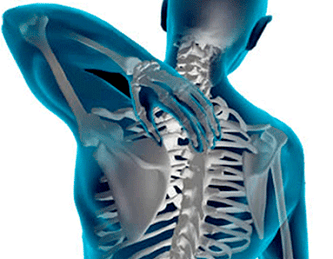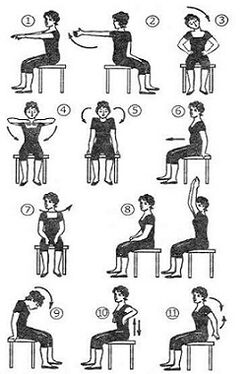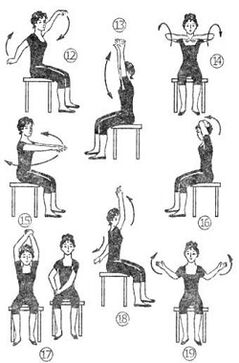
The thoracic spine is inactive, surprisingly stable due to the rigid fixation of the ribs, therefore it is least susceptible to osteochondrosis.Its clinical manifestations, syndromes rarely pester patients.
Nevertheless, there are those who manage to “earn” this disease for years of long sitting at the desktop and even in an uncomfortable, non -violent pose or a steering wheel in a shaking car.
Osteochondrosis of the thoracic spine most often falls on the one who suffers from scoliosis, does not follow his posture, stoop, hump.
At the same time, the breast vertebrae are unnaturally bent, together with muscles, ligaments, nerve fibers, they experience great tension and additional, very significant load from year to year.
Fatigue, wear of the vertebral segment and gives an impetus to the development of the disease.
Small tricks:Construct the correctness of the posture by gluing a narrow ribbon of adhesives along the spine.
As soon as you are leaning, and your spine is twisted, the adhesive plaster will stretch, reminding you of the need to change the pose and take the correct posture.You will be amazed at how many times a day your body accepts the pose dangerous for the health of the spine.
Thoracic osteochondrosis: symptoms
- Vascular disorders, the cause of which is osteochondrosis, can be suspected if, for no apparent reason, the skin is peeling, the nails become very brittle, the legs are often chuckle.These are external manifestations of the disease.
- The enhanced stoop, the limitation of mobility, as well as burning or cutting pain, spilling between the shoulder blades up to the shoulder girdle and the back of the head with a slight pressure on one of the spicy processes (they are noticeably given on the back during the inclination), will suggest that the disease progresses.
- With osteochondrosis of the thoracic spine, as well as with cervical osteochondrosis, irritation of nerve roots, clamped in the narrow intervertebral canal for them, can cause pain in the chest.It often appears unexpectedly, for example, when a person gets up from the table after a working day.It does not allow you to breathe, in strength and surprise it resembles a stab in the back with a knife.Its character sometimes makes a serious illness of the cardiovascular system, up to coronary heart disease and myocardial infarction.But the cardiologist is powerless here.The cause of your suffering is thoracic osteochondrosis.
- Gastralgic syndrome is often disguised as diseases of the gastrointestinal tract.The acidity of gastric juice can be significantly reduced.The main complaint of patients who often address the gastroenterologist is pain in the epigastric region, which, as a rule, intensifies in the afternoon after physical work and subsides (or completely passes) after a full night rest.Its appearance and strengthening are practically not related to seasonality (as you know, in true patients with gastritis, peptic ulcer, rare autumn and spring pass without serious exacerbations), food quality, and diet.These features of the manifestation of the syndrome help to establish a real diagnosis.After the treatment of the underlying disease - osteochondrosis of the thoracic spine, the acidity of gastric juice is restored without the use of drugs.
- If intervertebral discs at the level of the 7-11th vertebrae suffer from osteochondrosis, the pain is strong, paroxysmal, then dull, aching - spreads to the right hypochondrium, as if your ribs hurt.During an attack, patients often enter a hospital with a wide variety of diagnoses: acute calculosis cholecystitis, kidney vengeance, pancreatitis, colitis, urolithiasis.
Often you have to conduct the most detailed medical examination in order to exclude diseases of the abdominal organs, make the correct diagnosis.
Methods of treating thoracic osteocodrosis
Treatment of osteochondrosis of the thoracic spine depends on the stage of the disease and mainly comes down to conservative treatment.Surgical intervention is extremely rare in the case of a spinal hernia.
- In the stage of exacerbation of the disease, treatment is aimed at relieving pain.To relieve pain, non -steroidal anti -inflammatory drugs and analgesics are prescribed.To relax the muscles and increase the mobility of the spine, muscle relaxants are prescribed, and to improve blood supply to vasodilator drugs.Drug treatment is combined with physiotherapy and massage.
- In subordinate phase, treatment is aimed at stretching the muscles of the thoracic spine.The most effective method of kinesheterapia is.
- In the remission stage, treatment is aimed at improving the mobility of the intervertebral discs, restoring the natural bends of the spine and strengthening the muscles of the back.
Therapeutic gymnastics for breast osteochondrosis

Exercises for breast osteochondrosis must be performed daily in the morning and evening.This complex is performed sitting on a chair or stool.We perform all movements smoothly, without sudden movements.The pace of execution is slow.The breath is free.
- The starting position sitting on the chair, the legs are slightly divorced, the arms are extended forward.We squeeze and unclench the fingers at a fast pace fifteen to twenty times.We lower our hands, lean forward and shake the brushes.
- Starting position sitting on a chair, legs together, arms along the body.Raise the right hand forward and, along with the turn of the body and the head, take it back.We hold the hand at right angles, the gaze follows the movement of the hand.We return to the starting position.We repeat the same in the left side.Repeat 3-6 times in each direction.
- Starting position sitting on a chair, legs shoulder -width apart, arms on the belt.We tilt the head alternately to the right and left to the shoulder.Repeat 3-6 times in each direction.
- Starting position sitting on a chair, legs shoulder -width apart, brushes on the shoulders, the elbows are allotted to the side.We lower and raise the elbows 8-10 times.
- Starting position sitting on a chair, legs shoulder -width apart, arms along the body.We perform circular movements with the shoulders forward and back 5-8 times in each direction.
- Starting position sitting on a chair, legs shoulder -width apart, arms along the body.We take a breath and exhale.When inhalation, we stick out the stomach, when exhaling, we draw it.Repeat 3-4 times.
- Starting position sitting on a chair, legs shoulder -width apart, arms along the body.We turn the head around our own axis to the left and to the right.We repeat 3-6 times for each side.
- Starting position sitting on a chair, legs together, arms on the knees, fingers in the castle.When inhaling, raise the clutching hands above your head when exhaling, lower it to your knees.Repeat 4-6 times.
- Starting position sitting on a chair, legs shoulder -width apart, arms along the body.We tilt our heads forward, trying to reach the chin to the chest.We return to the starting position.Repeat 6-8 times.
- Starting position sitting on a chair, legs shoulder -width apart, arms along the body.We slip our hands along the body in the armpits on inspiration and lower it on exhalation.Repeat 4-6 times.
- Starting position sitting on a chair, legs shoulder -width apart, arms along the body.We reduce and dilute the shoulder blades.Repeat 6-8 times.
- Starting position sitting on a chair, legs shoulder -width apart, arms along the body.We perform the movements of the hands as when swimming with a rabbit 6-8 times with each hand.
- Starting position sitting on a chair, legs shoulder -width apart, arms along the body.Raise our hands through the sides and connect the back sides of the hands.Inhale - raise our hands.Exhale - we lower our hands.We will lose 4-5 times.
- Starting position sitting on a chair, legs shoulder -width apart, brushes on the shoulders, the elbows are raised.We perform circular movements in the shoulder joints clockwise and counterclockwise.Repeat 6-8 times in each direction.
- Starting position sitting on a chair, legs together, arms extended forward.We spread our hands to the sides - inhale, return to the starting position - exhale.Repeat 3-4 times.
- Starting position sitting on a chair, legs shoulder -width apart, arms along the body.Through the side, raise the right hand over the head and touch the ear.We repeat the movement with the left hand too.Repeat for each side is 4-6 times.
- Starting position sitting on a chair, legs shoulder -width apart, knees on the knees, fingers are clutching in the “lock”.Raise the closed hands - inhale, let us go to the right knee - exhale.We raise our hands - inhale, lower it to the left knee - exhale.Repeat 3 times for each side.
- Starting position sitting on a chair, legs shoulder -width apart, arms along the body.Raise the right hand up, and take the left simultaneously back.Change the position of the hands.Repeat 6-8 times.
- Starting position sitting on a chair, legs shoulder -width apart, arms bent at the elbows, the palms are connected.We perform the movement of the hands as when swimming with a brass.Repeat 6-8 times.

Preventive methods
To avoid exacerbations, prevent the appearance of pain:
- Strengthen the back muscles;
- Follow your posture;
- Do not catch a cold!
- Having sweated after exercising sports or wet in the rain, immediately change into dry.Humidity and cold are the first enemies of your spine.























